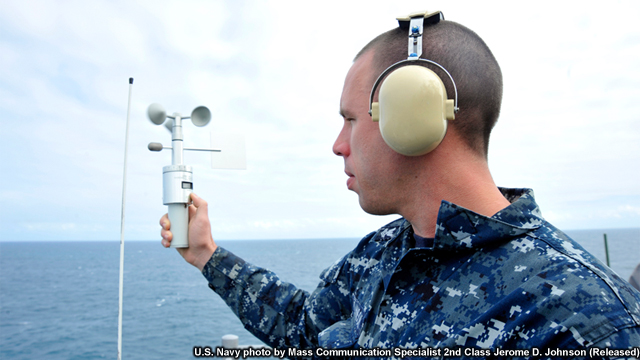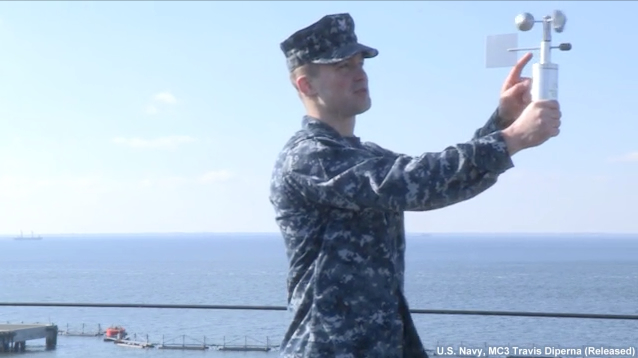Measuring Wind
Standing at a location away from any obstructions, you can measure the relative wind using an anemometer. Many ships have permanently mounted shipborne anemometers that provide a true wind, one that has been corrected for the ship's movement. If a shipborne instrument is not installed or is not working correctly, you'll need to use a handheld anemometer.

Wind speeds, including gusts and squalls, are reported in nautical miles per hour, or knots, to the nearest whole knot. Remember that brief changes of winds occurring within a two minute time period are gusts, and if the abrupt change lasts longer than two minutes, it is a squall.
Wind direction is observed to the nearest whole degree compass point and reported to the nearest ten degrees.
If you need to take wind measurements using a handheld anemometer, listen as AG2 Ferguson provides you guidance for where to take these observations.
AG2 Ferguson: "All ships have anemometers. Some larger ships have equipment that will convert the relative wind to true wind. If you believe this equipment is malfunctioning, you may have to calculate it yourself – with that, you would use a hand-held anemometer. When using a hand-held wind anemometer, you need to orientate yourself to the center-line of the ship or due north to get relative or true winds, respectively. You need to stand with your arm outstretched, facing true north. Your cups will start to spin, which generates the speed, and your wind vane will alter for direction. You need to find the mean area for direction and also speed."
